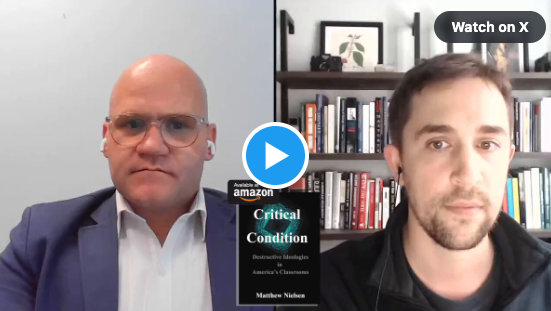by Matthew Nielsen
In a recent article about how journalists frequently get school choice wrong, I included as one example Mr. Kris Nordstrom of NC Policy Watch. He was identified as a journalist in the piece, but he subsequently corrected me on Twitter. His official job title at the organization is “Senior Policy Analyst,” which creates more concerns about his work product than it does to alleviate them. Be that as it may, his continued employment in that position indicates that someone is pleased with his work product, irrespective of his proclivity for exaggeration and misinformation. Policy analysis seems to have a much wider spectrum of quality than might be hoped.
After deflecting on the two issues raised in my article during our exchange on Twitter, he chose to end the conversation by declining to “teach” me the “difference between achievement and growth,” another false assumption.
I created a document that addressed each of the nine points in his June 2019 article on school choice, in which he also attacked Mr. Joel Ford, a former Democratic state legislator and school choice supporter. I emailed the document to Mr. Nordstrom, which he declined to address.


Below, I have included responses to each of his “nine ways” in which, he alleges, school choice harms public schools in North Carolina. It’s worth noting that his chosen headline specifies that schools are hurt, rather than students–an assertion he wanders from periodically in his article. But, it’s an important distinction to make–schools or students?
I will not include the full copy of his original article (available here), but you’ll find each of his nine allegations along with my responses below.
What Mr. Nordstrom’s work lacks in evidence and facts, it more than makes up for in volume–the below is a response to only one of his many anti-educational freedom blog posts:
1. Charter schools and vouchers create budgetary pressures on traditional public schools
a. From the research he cites in his article comes a rebuttal to his own assertion:

2. Charter schools exacerbate the racial segregation of public schools
a. From the research he cites in his article comes a rebuttal to his own assertion:

3. Choice advocates promote biased school performance grades to stigmatize traditional public schools
a. He impugns the motives of Mr. Ford and other school choice advocates without providing any evidence whatsoever. Further, the grading system rates district and charter schools based on the same formula and charters only affect integration minimally, as noted in the research he cited in the previous point.
4. Charters are increasingly turning into an investment scam for real estate investors
a. Baker, Black, and Green assume quite a lot in this piece by nudging speculation into surety. Terms like “as much as” or “up to” turn into “more than” and “over.” A mistake Mr. Nordstrom makes, as well. Further, AZ Republic is the wrong place to get an objective take on Mr. Way in Arizona. Harris, of the Republic, has been discredited time and again (see: here, here, & here).
5. As measured by standardized tests, charters appear to be delivering inferior results
a. By focusing only on growth, he ignores that a higher proportion of charter schools are rated A or B than district schools, statewide. To focus only on growth is deceptive and misleading. Charter schools have consistently shown promising results, as evidenced by their sustained and growing popularity among families throughout the state, and country.
6. The Opportunity Scholarship voucher program subsidizes discrimination and religious indoctrination while costing the state millions each year
a. The voucher program is intended to provide a child with a portion of the financial resources they would have benefited from in a district school. The school they select is their prerogative.
7. Charter advocates prioritize taking money from traditional public schools instead of trying to increase funding for all schools
a. He claims “most charters… get more local funding than their” TPS neighbors. He links to a 2016 article he wrote that never provides data on this. Where is the data to support this claim?
8. Voucher and charter advocates emphasize private benefits to education, eroding the idea of education as a shared, public good
a. Schooling is not a “public good” in the technical sense that you’re using. They’re not “non-rivalrous” and they’re not “non-excludable.” Educational freedom should be available to all families, not just the ones that can afford to live in a particular zip code, or devise ways to game the system.
9. Debates over choice distract policymakers from providing adequate funding and supports to help all students succeed
a. Adding dollars doesn’t seem to improve student learning. Even if it did, dollars have been added and districts are choosing to direct them outside of the classroom. For example, student-to-teacher ratios have decreased since 1992, giving teachers more time to spend with each student. From FY1992 to FY2014, per-student spending increased by 1% in NC, while teacher pay decreased by 8%. (See here)
Rather than stretching evidence beyond the breaking point, policy analysts should consider analyzing how policies actually affect students and families. Sooner, or later, readers will discover who has been attempting to pass ideology off as reality.


